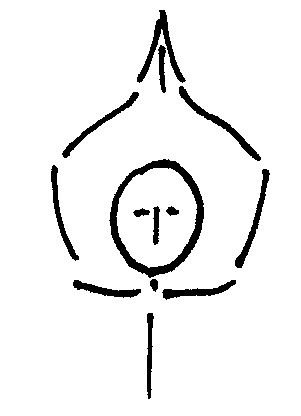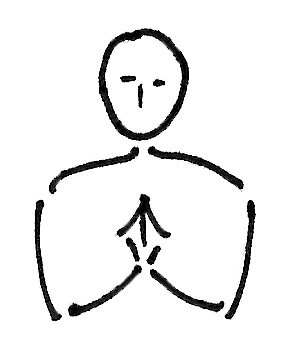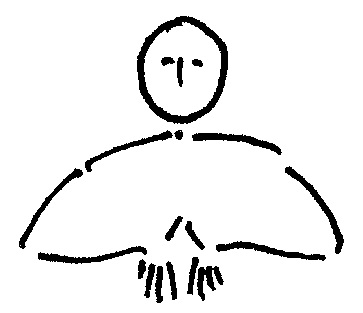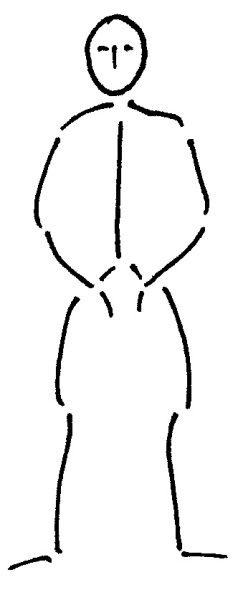By Ron Davis
Shambhala Mountain Center hosts Qigong for the Seasons: Winter Qigong with Ron Davis November 14–16, 2014
Nature’s winter energy moves toward the center. Green leaves have withered away leaving the life force nestled in the roots; autumn’s warm hazy air has been cleansed and brightened by cooler winds; flowing water slows and begins to freeze; brown meadow grass has fallen back to earth. For people, winter causes our Qi vital energy to retract from the outer aspects of the body and settle in the bones, kidneys, and the lower dan tian (LDT) of the abdominal region. This seasonal migration of energy toward the body’s core is essential to our health.
Winter is a time for deep resting and nourishing the most vital structures of the body: bone marrow, kidneys, spinal cord and brain. We can do this with qigong exercises, specific meditations and certain foods and herbs. As part of the Winter Qigong practice, the following exercise is a wonderful way to help you stay healthy all the way through winter.
Filling the Lower Dan Tian to Nourish the Kidneys.
The lower dan tian (LDT) functions as an alchemical stove. It has a diffuse boundary going from the lower abdomen, down to the perineum, up the lower back, and forward beneath the diaphragm. The essence of food and air becomes transformed inside the LDT into the Qi that circulates through the meridian system. The kidneys are located close to the LDT and act as the energetic foundation of each organ’s yin and yang. That’s a big responsibility. Without the Water and Fire of the kidneys all other organs would dwindle away.
This exercise brings the healing Qi from earth and sky into the top of the “taiji axis” (the deepest energy channel that runs through the very center of the body), then down to the heart where it mixes with the Qi of the chest, and then down to the LDT for purification and storage. Filling The Lower Dan Tian To Nourish The Kidneys will stimulate the body with vital healing energies from terrestrial, celestial, and human sources.
BEGIN by standing with feet shoulder-width apart, hands down with palms near outside of thighs.
Inhale slowly as you lift arms laterally in a big arc, with palms up, to overhead position where the palms touch.

Think of gathering in fresh Qi from the earth and from the sky. Then compress this Qi between the hands. Think that you are consolidating and transforming raw elements into a priceless jewel.
Exhale very slowly through your nose as hands, in prayer position, come down the front of the body’s midline to the chest.

Think of bringing the Qi jewel down the taiji axis and into your heart. Although the hands move in front of the body, the energy is brought down the internal channel. Still exhaling, turn hands over into a diamond shape with fingers pointing down, thumbs up, and palms against the body.

Continue to exhale, move hands downward, as the Qi descends the taiji axis and flows into lower dan tian. Finish exhalation with thumbs at navel and palms lightly touching abdomen. Relax.
Inhale and turn hands so that palms are facing each other, fingers still pointing down, then move hands apart just out to hip-width. This is a short inhalation.
Exhale and bring palms toward each other until almost touching. Think of packing the valuable energy into the LDT for storage.

At the end of this short exhalation, drop your hands to sides and relax your shoulders.
Do 8 repetitions.
At the end, stand still with right hand resting lightly on the LDT, left hand over right. Take 3 slow natural breaths, feel the Qi circulating.
This is the premier exercise for Winter Qigong practice. Movement is kept to a minimum, while mental intention is foremost. Use your mind to lower the Qi. The movements bring the limitless energy of the outside world into the nucleus of personal existence. And then the treasured Qi is stored in the bedrock reservoir of vitality, there to be slowly refined and nourished for self-preservation and good health through the long season of Ultimate Yin.
~~~
 Ronald Davis, DC. LAc. Dipl Acu (NCCAOM) has been in clinical practice since 1984 and has taught qigong, taiji and spinal health care classes for more than twenty years. He is a certified qigong instructor as well as a medical qigong teacher for professional continuing education credit from the National Commission for the Certification of Acupuncture and Oriental Medicine. Dr. Davis is committed to helping people learn how to improve their health by using qigong, meditation, and dietary guidelines. He is also the author of the forthcoming book, Qigong for the Seasons.
Ronald Davis, DC. LAc. Dipl Acu (NCCAOM) has been in clinical practice since 1984 and has taught qigong, taiji and spinal health care classes for more than twenty years. He is a certified qigong instructor as well as a medical qigong teacher for professional continuing education credit from the National Commission for the Certification of Acupuncture and Oriental Medicine. Dr. Davis is committed to helping people learn how to improve their health by using qigong, meditation, and dietary guidelines. He is also the author of the forthcoming book, Qigong for the Seasons.

